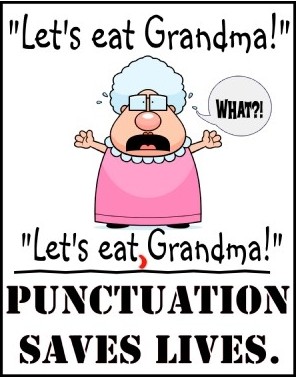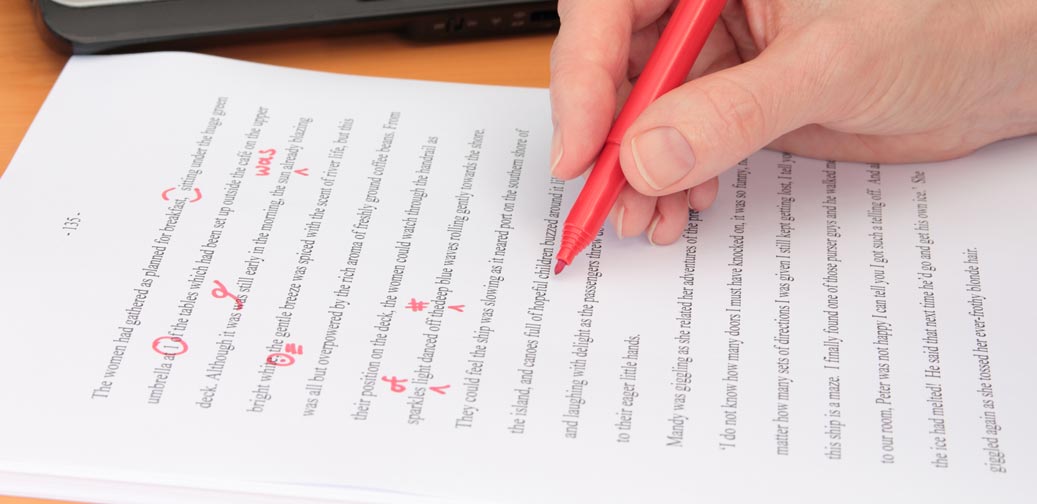BASED ON A TRUE STORY
The scriptorium (writing room) at the Abbey of Our Lady of Perpetual Wordage, 835 A.D.. Monks are seen diligently copying text into new volumes. The chief scribe, Brother Mark, is meeting with Brother John about the Abbot’s new book, which he hopes will become a new best-seller. Brother John has been transcribing it for the last several weeks.
BROTHER MARK: He wants to make a couple of teeny, tiny changes.
BROTHER JOHN (suddenly tense): Ah… And what would those be?
BROTHER MARK: A couple of words to add to chapter one, in the second paragraph…
BROTHER JOHN: Aaaaaah! [He throws the ink pot through a nearby window, then sits silently weeping, taking care not to drip tears onto the parchment.]
————————————————–
Scribes had it rough, but even after the invention of movable type, late revisions to a text were as welcome as rats in a restaurant. Metal type was set by hand, assembled line by line and locked into frames ready for printing. Even a “teeny, tiny” change at that point was simply too expensive to be allowed. (A health-and-safety exception might be made in cases where the czar’s or emperor’s name had been misspelled.) Computerized typesetting makes it less difficult and less expensive to edit, update, revise and otherwise second-guess the text of a book or article. “Less difficult” doesn’t mean “easy,” however; nor does “less expensive” mean “cheap.” It’s still important to get things right before you commit the text to typesetting. The manuscript you send to your designer should be in final form.
Love Your Editor(s)
Long before your book gets into print, or even reaches a designer, it must be edited. “But I’m a writer!” you say. “I don’t need no stinkin’ editor!” — Oh, yes, you do. No matter how objective you try to be, you are too close to the material and too personally invested in the project to see problems that a reader would notice right away: bits that are confusing or out of sequence, missing details that seem to you to be too obvious to mention, but aren’t at all obvious to your audience. Having an external viewpoint on your manuscript is invaluable. That’s what an editor is for, as any best-selling author will tell you.
Types of Editing
Whether you’re self-publishing or thinking of submitting to an agent (there are good reasons not to submit directly to a publisher), you need your manuscript in the best shape it can be. There are different categories of editing, and editors who specialize in one or more. There are various classes of editor, but I’ll cover the two critical ones for DIY authors here.
Line Editing is a detailed, line-by-line, analysis of the text to ensure that (in a fiction work) your characters are consistent (your heroine, who is mentioned as being out of shape in the first chapter, somehow manages to climb a hundred-foot cliff in chapter five), that the book’s “voice” doesn’t change half-way through, and that the plot makes internal sense. There is excellent advice on the subject of voice here on the Self-Publishing School site.
Interrupted periods of writing, where you worked on the story intermittently over a longish time period, inevitably lead to changes in the mood, pace and style of the writing in different parts of the narrative. A lapse in concentration can find your character saving the day with an ability that you forgot to introduce earlier in the story, which the reader will consider (and which is, in fact) cheating. These are real examples from my own forays into editing.
In a non-fiction work, skipped gradients of understanding are easy for the author to miss, because his or her expertise gets in the way. A climbing book that emphasizes the importance of proper ropes for rappelling, but hasn’t covered how to recognize good from bad quality when selecting climbing ropes, is doing a disservice to the reader. Good editing will catch that. The master of explanation, Isaac Asimov, wrote science fact books on esoteric aspects of physics that are a joy to read, because they start with easily-understood ideas and build upon them step-by-step, never forcing the reader to jump an impossible chasm of understanding.
 A line editor will also be on the lookout for punctuation uglies, misspellings, incorrect use of words. Thus the second important editorial function, Copy Editing, may be combined in one person. They are two different hats, however.
A line editor will also be on the lookout for punctuation uglies, misspellings, incorrect use of words. Thus the second important editorial function, Copy Editing, may be combined in one person. They are two different hats, however.
A copy editor has to know when an en-dash is correct, the right place for a period in relation to quotation marks (different in the U.S. and the UK, for example), and how to place or remove commas to clarify the meaning of a sentence. (Remember “Eats, Shoots and Leaves” by Lynn Truss?)
Of course, you should spell-check your copy, but many easily-overlooked typos will not be picked up by your spell-checker: then is often substituted for than, their for they’re (or even there), and the painful number of times that apostrophes are inserted before the “s” in a plural attests to the fact that there aren’t enough copy editors in the world.
Proofreading

Neil Gaiman, the SF and fantasy author, once remarked that it doesn’t matter how many times he (and his publishers) proofread a new book; when he picks up a newly-printed copy and flips it open, the first thing he sees is the typo everybody missed. It’s just not possible to proofread “too many times,” but you can help a lot by keeping formatting to a minimum and making sure the text is clear and well-spaced in the way I suggested in Part 1.
Word, Pages, Google Docs, the increasingly-popular Scrivener and their kin make it so easy to switch fonts, use fancy formatting, justify the right margin and make big, bad, bold headings. Don’t. An editor or a proofreader needs to concentrate on the words, not on how they look. This is true even if your proofreader is your favorite aunt or the guy in the next cubicle at the office. The last thing either wants is something that takes effort just to read. Take the formatting guidelines in Part 1 to heart.
If your book (or long document) is important enough to publish, it’s important enough to proofread. You should engage at least two different people to do the proofing, and you should do another round yourself. When you’re confident that “That’s it!” then you’re ready to save, lock and send your manuscript to your designer for typesetting.

